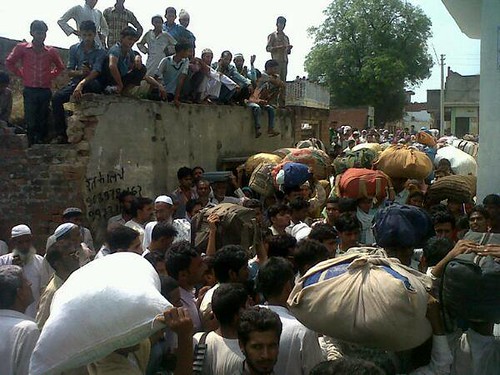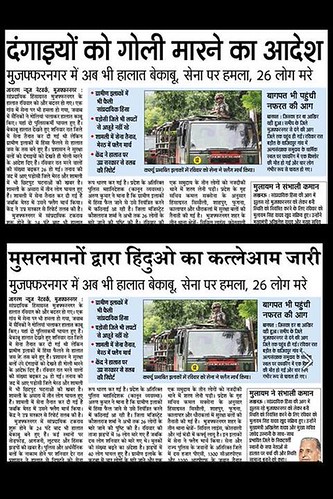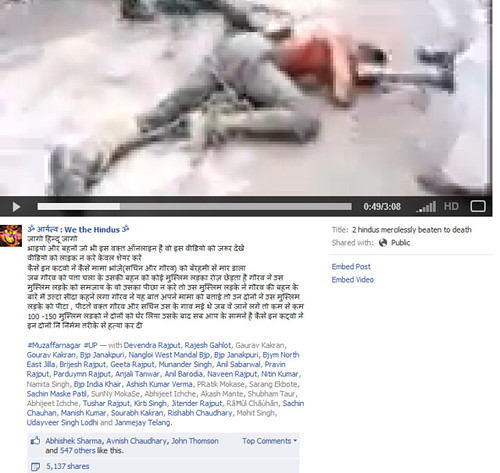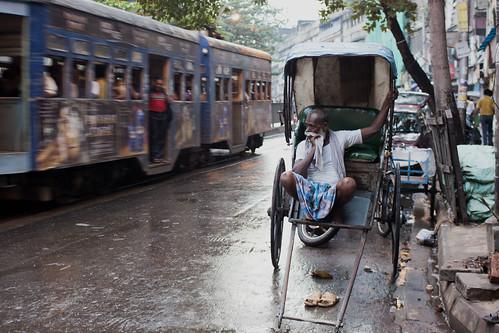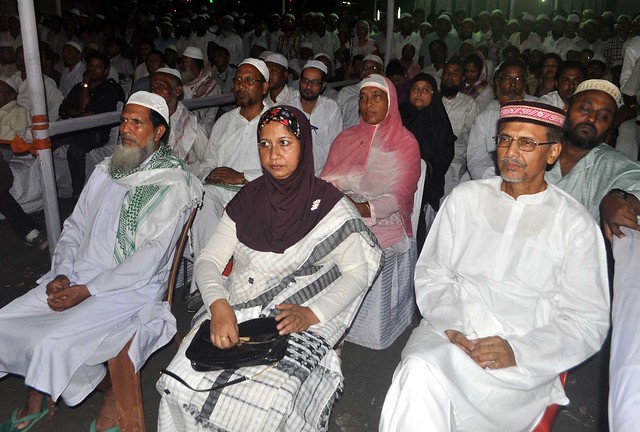Profiling a Criminal of a Village, Turkauliya in Paroo, Muzaffarpur, Bihar.
By Mohammad Sajjad,
This is to recount the tale of the pursuit of political power by a Muslim law-breaker with the whole-hearted support of some of his villagers (in the cause of glory of the community?). This may be happening anywhere in Bihar or elsewhere but what is unfolding in this narrative involves a criminal in an economically and educationally backward village Turkauliya (Paroo-Saraiya thana) in Muzaffarpur District in the northern part of the State.
The story is being told to enable thinking sections of the community and the larger society to appreciate how marginalized groups can be induced to endow petty criminals with charisma with the fond hope that thereby a disempowered group could be empowered.
The ugly phenomenon of crime engulfed the people of Turkauliya in complex ways. In the remembered history (collective memory) of the village, no youth appeared to have taken to lumpenism or crimes i.e. resort to violence for livelihood and personal gain on a ‘continuing basis’. But by 1995-96, two young chaps developed affiliations with mobike-snatching gangs. While one of them ran away from the village, another one camped there in the village to grow as even bigger criminal. Some village notables extended their moral support admittedly, for the sake of ‘Muslim Pride’ at all costs.
It would be worthwhile to go a bit longer in the profile of this criminal. Born in 1971, Mahfooz (real name changed) comes from a poor Shaikh Muslim family with negligible land-holding. His poverty does not explain anything for boys with identical background tend to migrate to earn livelihood, after completing their school education. Mahfooz did not conform to this pattern as he pursued no education beyond a smattering of Hindi-Urdu. He joined his father (who works in a small town, Serampore, near Calcutta) in the 1990s, ostensibly to supplement the meager income to run his family. Soon, however, he decamped his new home after robbing his first murder victim of a few thousand rupees. Fortified with the booty he has since been living in the village leading life of a ‘career criminal’!
The Laloo-Rabri era (1990-2005), saw emergence of a new genre of criminal enterprise in the Bihar countryside viz., vehicle-snatching and kidnapping. Precisely this was the time when notorious gangster, Md. Shahabuddin of Siwan converted himself into a legislature with active political patronage of Laloo-Rabri. Md. Shahabuddin, therefore became a kind of role model, or source of inspiration, for many ‘misguided’ or lumpenised Muslim youths of Bihar .
The talented and by now trained protagonist, Mahfooz, joined a group of similarly motivated ‘entrepreneurs’ in a small market-town, Chakiya, in the East Champaran on the Motihari-Muzaffarpur highway which happens to be an important life-line of the region. Those in the know aver that his gang robbed a truck loaded with Hero Honda bikes, and sold off the loot in the adjoining areas at throw away prices. The enterprise and resourcefulness of this group is evident from the fact that managing forged documentation of the stolen goods posed no problem as they could reportedly enlist willing cooperation of the relevant government functionaries. Like all successful entrepreneurs Mahfooz is also said to having the innate ability to counterbalance daring with moderation of risks. He decided to shift the base back to the village so as to facilitate ‘safe and remunerative’ disposal of the looted property, as also to avoid the chase of the police of Chakiya-Mehsi.
The village sources assure us that his first ‘customers’ were two government school teachers, counted among the village gentry. One of the gentlemanly duo was not so lucky as once he paid Rs 15000 as advance he neither saw the money nor blessed with the much aspired two wheeler; the other gentleman, Azimuddin (real name changed) had better luck as he was blessed with the vehicle which found way to his son-in-law as dowry . This transaction drew the attention of the village community for the teacher who managed to acquire the bike was a role model of sorts what with his stature as a government employee supplementing his income with private tuitions. His modicum of wealth coupled with the social prestige that still attaches to the guru or ustad in the rural hinterland drew attention to the returning criminal prodigal.
Thus ‘motivated’ Mahfooz decided to stay put in the village to lay the foundation of a local enterprise hitherto unknown to the village – vehicle snatching and kidnapping for ransom. He enlisted the cooperation of the like-minded if somewhat less gifted and experienced young men of the adjoining villages. The strategic location of his humble abode right on the highway and adjacent to the mosque proved a boon for his ‘business’ as it served as a hide-out for his associated and the ‘tools of their trade’. That this arrangement was not exactly a secret is borne by the fact that more than once the Police raided his house, recovered a bike which was looted after killing the bike-rider/owner. [In one such police raid, he is said to have put the illegal weapons (AK-47) under the bed on which his sister was lying with labour pain, and this is how he could dodge the police. The police subjected his sister to abuse, and in disgust she decided not to visit her maayka (parents’ home) ever again. As a mark of the appreciation of his shrewdness, this anecdote circulates in/ through casual gossips of the gentlemen of the village]. These minor inconveniences notwithstanding, no major harm came to him except brief imprisonment (in 2007) as under trial.
Meanwhile, a Rajput criminal of an adjacent village, (whose ‘crony’ was Mahfooz) was killed by a Special Task Force (STF), in an “encounter”. The “encounter” took place in broad daylight in the midst of the highway village, and was a big relief to the common people. Simultaneously, however the killing added to the notoriety [and stature] of this criminal, Mahfooz. Why? Because criminals survive through generating fear among the public which is what Mahfooz managed to do as the episode not only demonstrated his capacity to get an important fellow criminal liquidated but his clout with the Police was also brought home to all. It was widely believed that Mahfooz along with his friend was involved in the kidnapping; was picked up by the police and in interrogation he not only admitted to the crime but: (a) led to the recovery of the victim, and (b) got his Rajput colleague killed in the encounter. Since then he enjoys the luxury of being a more feared criminal. It however also created a complex and uneasy social relation in that the clansmen of the deceased became hostile to the ‘turncoat’.
In the elections of three-tier local bodies (Panchayati Raj Institutions) and legislative bodies, this young criminal came to be seen as a useful person by the politicians. In the Panchayat elections of 2001 and 2006 this criminal gained much prominence. Politicians started hiring him to “manage the booth” [a euphemism for poll-rigging].
Welfare schemes of the government like providing shelter to the poor under the Indira Awas Yojana, and Red Card Scheme for highly subsidized food grains for the poorest of the poor etc could benefit the illiterate poor only when a share of the scheme was routed by the elected village headman (Mukhiya) through the man we are writing about. For example, the Indira Awas Yojana awards Rs 45000 to each person. It is a standard practice that Rs 10 to 15 thousand is pocketed by the Mukhiya and the broker (in this case, the criminal). The managers of the nationalized Banks (branches opened in early 1980s) are also the co-sharers; otherwise opening a bank account is made almost impossible for the illiterate poor, mostly women, as the male members are away in Delhi, Calcutta, Bangalore, Bombay, Punjab, and Gujarat working mostly as taxi-drivers, electricians, and masons etc. Thus, it is a story of Mukhiya-Criminal/Broker-Bank Manager nexus.
The emergence of this scenario evoked mixed responses. While some were aghast that their village had degenerated from its earlier poverty stricken but placid state to the bad world of crime, many more found comfort in strange rationalizations. The larger group found solace in explanations like “now the Bhumihar, Rajput, Yadav hegemons and politicians can’t ignore us; the Muslims, they have to bargain with us and share their loot with a Muslim”. These ‘rationalists’ found it fit to laud Mahfooz on the plea that only someone as resourceful as him could make the Muslims of the village a political force to reckon with. With this new-found popularity, the man decided to rise up to the expectations of his admirers; he dared to plot [and assist in execution] the killing (Dec 2008) of an influential person [Bhumihar], who was an aspirant for the position of Mukhiya. The criminal, Mahfooz had earlier extended substantial electoral help to the deceased aspirant in his unsuccessful electoral bid in the Panchayat elections of 2006. In return, the deceased had helped and financed him to bribe the police to ensure that his police record could be made unblemished.
Like many criminal-entrepreneur Mahfooz realized that greater gains awaited him if instead of enabling others to assume the over-lordship of the Panchayat why not he don the mantle of the overlord himself. Administrative crackdown against criminals, since 2006, by the Nitish Kumar led government (who had promised his electorates to end the Lalo-Rabri’s “jungle raj” and give good governance, sushasan) was presumably another factor behind this change of role. Back from a brief spell of incarceration in 2007 (as a suspect in a murder investigation) he got down to the task of achieving the goal he had set for himself. At this stage we have to bring back to our narrative the two village worthies – the teachers who were his first two customers when he had decided to return to his roots to more efficiently hawk his looted merchandise. The two imparters of education used their persuasive skills to make the villagers realize the high degree of eligibility of their own daredevil to the elected office of the Panchayat Chief. In this campaign for public education they employed a substantial dose of anti-Hindu/ pro-Muslim communalism. Of course they also did all in their power to boost the morale and massage the ego of their putative idol.
Meanwhile, moving ahead with his political enterprise and with an eye on the Panchayat Polls of 2011, around the year 2009, Mahfooz recruited 5-6 young boys of the village mostly in the under-15 age group. One of the important tasks assigned to these boys was to visit village households to sniff out petty disputes and problem in which the ‘budding leader’ could intervene. As a majority of adult males of this village were working as migrants, the poor illiterate or semi-literate women soon became dependent on him not only for resolution of minor domestic discords but for sorting out problems like accessing the local quacks, opening/ operating Bank accounts, similar errands in Community Development Block, police thana etc. There were other ‘benefits’ also; For instance, the subsidized Fair Price Shop owner (called “Dealer”) will give ‘adequate’ kerosene, sugar, etc., to the poor women only with the intervention of the tough turned champion of the poor. Similarly, finding brides and negotiation of dowry will take place with his ‘able’ intervention. Post marital dowry disputes will also be similarly resolved. On such occasions, the little land-holders also go for distress-sales, and such transactions too will be brokered by him. All these services would of course come at a price. The women know it, but they also realize that they have limited options. This arrangement supplements his ‘popularity’, ‘influence’, or ‘charisma’ apart from being a remunerative enterprise.
But as the Panchayat elections of April 2011 started coming closer some more electoral management had to be done. Intra-Muslim social diversities had to be managed. Rayeen and Dhuniya i.e. Muslims at the lowest rung of a borrowed hierarchy had to be mobilized in favour of the newly discovered champion of the Muslim cause. Whipping up the religious passion was the best way that the two dedicated teachers thought of. An issue of land of the village mosque was discovered so as to be used as a vote-yielding machine. The two God-fearing educators suddenly discovered that only half the land donated for the Masjid was actually occupied by the place of worship with the other half being still occupied by the descendents of the donor. What belonged to the God had to be reclaimed to construct a grand edifice which could display their assertive religious-political identity. The descendent of the donor claimed with the help of papers that what the donor had gifted was already with the mosque. All this was to no avail as the two teachers had tutored their ambitious pupil not to let go of this opportunity and to keep the issue alive by means totally foul. A three day session of consultative meetings was held at the [criminal’s] house during 17-19 January 2011, “presided” over by the ‘gentlemen’ teachers. Of course such counsel was music to the ears of someone so well-schooled in the discipline of violence and lawlessness. In the midst of the ensuing bedlam there was an unexpected impediment -a simple minded resident of the village of modest personal standing but from a prominent Shaikh family of the village appeared to have seen through the alliance between the educators and law-breaker and started asking uncomfortable questions; what is worse, the doubts of this person started making sense to the people much to the consternation of the schemers. Few weeks before this (the 17-19 January 2011 meeting), on a Friday, there was altercation with the simple-minded man inside the mosque after the Juma prayer, on the issue of fund raised for the maintenance/ reconstruction of the mosque; whereby the ‘gentlemen’ teachers were alleged to have defalcated around Rs. 25-30,000. The criminal had collected and claimed to have handed it over to the teachers, but the teachers denied it; many guessed that the money taken from the teacher by the criminal for the looted motor-bike had to be realized by the teachers, and this was the way he realized it. Its expose was of course a matter of great worry for the two teachers.
The expose of this dirty political game would have obviously spoilt the electoral prospects of the criminal. So, this simple minded man, otherwise quite harmless, had to be eliminated immediately, to preempt the expose’. He was therefore done to death (19 January 2011). But the murder had to be shrouded in mystery. While on way to the mosque for the Maghrib (sunset) prayers and was just about to enter into the mosque, he was grabbed by two people including the criminal; his head was dashed against a wooden window in the house of the aspiring Panchayat chief (adjacent to the mosque), and according to some eye-witnesses, some kind of ‘deadly’ injection was also forced into his body just after grabbing. Liquor was then sprinkled on his body, a short while later in the silent chilling winter evening (19 January 2011), this unconscious man was carried to his home where his wife was told that having imbibed the prohibited brew to his heart’s content he had fallen into a stupor and that he will come around after a good night’s rest. Early next morning (20 January 2011) he was found dead.
The whole village was intimidated to circulate the reason of death: he died of overdose of alcohol. The influential, and ‘gentlemen’ were among the conspirators, and they succeeded in covering it up. They could even succeed in hiding the truth of the venue- the criminal’s house. They claimed that the deceased was found lying unconscious on the road from where they lifted him up to carry up to his home as good citizens. By the time the mystery of the murder unraveled to the migrant/overseas survivors of the deceased, it was too late. The criminal Mahfooz (at times displaying some traits of a psychopathic killer) and his aides, the ‘gentlemen’ of the village, had the last laugh. It is also said that one of the prime reasons why did the ‘gentlemen’ join in hatching the conspiracy to kill this harmless man, was that they had grown jealous of this family for its accomplishments in education and successful professional career, by virtue of which this family, since long, was counted among respectable and influential family of the locality, and that was a sort of eye-sore for some people of the village. This particular characteristic of rural life has been put by another study, in these words: “Poverty, jealousy, caste oppression, gender discrimination, internecine quarrels and the general idiocy of rural life had found a home there just below the surface of the idyllic village. Worst were the intellectual stagnation and the consequent fossilization of culture” . In course of time another layer of truth pertaining to the motive of the killing also started coming out. Some of the women had actually seen from the windows of their houses that Mahfooz and his aides had overpowered the man while he was entering into the mosque for sunset (Maghrib) prayers, shut his mouth with their hands from behind, forced an injection of a drug called ‘Fortwin’ meant to lay him unconscious; provided by a local medicine retailer) into his neck, and then they carried him into the criminal’s room, barely ten feet away from the door of the mosque, and then killed him . They had planned to kidnap him for ransom in order to raise money for his forthcoming elections. They had also called a criminal from Champaran, who was supposed to take away the kidnapped man. This ‘imported’ criminal had married a woman in Turkauliya . Since this whole exercise had got exposed at the moment, they had to abandon the idea and had to kill him. The eye witnesses (women and a frail old man in his late eighties) were given most horrific intimidations.
One of the aides of Mahfooz in this ‘political’ pursuit of killing was his immediate neighbour and an ice-cream vendor/hawker in Calcutta, Jameel (real name changed, a close relative of the criminal from Champaran), a semi-literate in Urdu, and a great admirer of the dreaded figures like Dawood Ibrahim and Osama bin Laden, and Mohammad Shahabuddin of Siwan. This man had intended to come back to the village leaving Calcutta for good and to make his both ends meet he had to become co-sharer in the ‘Panchayat Loot’ with his neigbour aspirant of Panchayat Chief. Assuming to be a politically informed individual, and claiming to have derived knowledge from Calcutta’s Urdu newspapers, Jameel would educate his villagers that it was only because of Dawood Ibrahim’s serial blasts in Mumbai on Friday, 12 March 1993, that the oppressed Muslim minorities could feel protected, particularly after the Babri masjid was demolished on 6 December 1992. Dawood should therefore, according to him, be regarded as a Muslim messiah. He would persuade the co-religionists of his village to internalize that in the face of aggressive American onslaught against the Muslims across the globe, Osama bin Laden should be regarded as the saviour of the Muslim Ummah. Those who tended to disagree with him would be declared either a man of lesser wisdom or less of a Muslim. And then he will poke teasing fun at the dissenting villagers. This ice-cream vendor, a former drunkard and gambler, has been infamous for picking up fights with the villagers and intimidating them in order to exercise some hegemony.
His activities resembled a lumpen, but persisting with such habits he had also transformed himself into a religious person- practicing devout Muslim- grew a flowing beard on his chin (this beard is biologically missing from his cheeks), and started offering daily prayers. Yet the common villagers wouldn’t take him as a noble fellow. Thus, Jameel’s ‘transformation’ was not a change of heart but a dirty politics of demonstrative religiosity. It reminds us of an incident reported by the then minister, Anisur Rahaman of the West Bengal’s Left front Government [“Ladener Roja”, in Ganashakti January 29, 2002], whereby a Muslim village in West Bengal, had observed fasting for Osama bin Laden praying his safety from the American hunt, even though the holy month of Ramazan was far away, and noted political theorist, Partha Chatterjee had to write a long essay on this kind of Muslim social behaviour, underlining how significant impact do the “hot headed and thoughtless people” have on ordinary Muslims .
Not long before this, a girl of the adjacent village, in the same Panchayat, was killed by this criminal, with sanction of the members of her family and the body was thrown into the river Gandak, at Rewa. Her ‘crime’ was that this upper caste Bhumihar girl had fallen in love with a lower caste (Kahaar- the palanquin carriers) boy. In exchange of this favour of “honour-killing”, the criminal was promised some Bhumihar votes in the forthcoming Panchayat elections of April 2011.
Given his criminal past, the police picked up the protagonist of this narrative for interrogation on March 3, 2011 (see Dainik Jagran, Hindi daily, Muzaffarpur, 4 March 2011), only to face protests of the villagers defying the cold night. The protestors included the two eminent teachers. In fact, one of the teachers, the younger one, with strong physical built, knocked the doors of each house in the village and threatened the reluctant young boys and men that if they did not come out of their house to stage a protest demonstration before the police thana, they will be assaulted very badly. The crowd championing the cause of their newfound hero consisted of all manner of humanity including many frail in body for reasons of age or ill health. They shouted against the police that a Muslim is not being allowed to emerge as a political leader. The next of kin of the Muslim deceased were condemned for approaching police and damaging the political prospect of the Muslim aspirant. Thus, even the survivor of the Muslim victim was subjected to harshest possible lamentation. [This is to be noted that earlier than this never did the villagers protest against the police when it searched the criminal’s house. Was it because the criminal was yet to aspire to become a politician?] Perhaps, in the perception of these “gentlemen”, the political rise of a Muslim criminal had to be facilitated even if the criminal did not spare even a Muslim of his own village. Of course, crime has no religious/caste identity. For these “noble” acts of trying to retrieving the land of the Masjid, and so many killings justified on one or the other pretexts, the ‘outspoken’ villagers stood firm in support of this criminal, they admittedly voted for him (actually his wife was the candidate as the Panchayat constituency was reserved for the women) with fervor and enthusiasm, in the Panchayat elections of 27 April 2011. After all, what does the life of an innocent man matter if it facilitates the rise of a Muslim muscleman up the local political ladder? In short, this kind of social support to the criminal was extended perhaps for the sake of ‘Muslim Pride’ at whatever cost.
Grass-root democracy and devolution of power to the local people and the desire of a religious minority relegated to the margins of the political process indeed extract a strange price – particularly in the State of Bihar! This ominous phenomenon however may or may not be specific to this particular village; ‘the marriage of local power…with formal democracy is [often] mediated by crime’ .
(Mohammad Sajjad, Assistant Professor at the Centre of Advanced Study in History, Aligarh Muslim University.)
[Note: This is a part of a chapter of forthcoming book, Contesting Colonialism and Separatism: Muslims of Muzaffarpur, Bihar, since 1857; its expanded version was published as “Witnessing Social Change in Village: Crime, Politics and Religion”, in the Indian Journal of Secularism, Mumbai, vol. 16, no. 4, January-March 2013, pp. 67-100]
-----------------------------------
1. In the 1980s, Amir Subhani, from a village of Siwan, had secured All India top position in the Civil Services (IAS etc) competitive exams, and he became a role model for the Bihari students of lower middle class and even of humble family background who gained confidence that schooling from a government school of rural Bihar was no impediment in the way of their career in the elite public employment. Evidently, success rate of the Bihari students started increasing in the Civil Services since then.
2. It would be worthwhile to know a little more about this government school teacher, Azimuddin. He had 5-6 daughters, and did not go for family planning as he had to wait for son; as his wife won’t deliver a son for long, he will turn harsh and at times even cruel against his wife as well as against his daughters. Finally he also got few sons. He would then openly discriminate between his sons and the daughters. Milk, egg and costlier vegetables would be earmarked only for his sons. That was much more evident before the villagers, as he used to take two different bags (jhola) to the haat (village market), better quality, hence costlier, vegetables will be put in one jhola meant for his sons and inferior quality vegetables would be put in another jhola meant for his daughters. Quite infamous for his miserliness, he was never shy of his discriminatory gender attitudes.
3. Some of these details were confidentially shared with the author even by some of the members of the family of the killer(s), and conspirators.
4. Arvind N Das, Changel: The Biography of a Village, Delhi: Penguin, 1996, pp. 182-183
5. The specific drug is a presumption on the basis that usually kidnappers are said to make use of it.
6. This is worth noting that the criminal enterprise of kidnapping for ransom is said to have emerged from and entrenched into Champaran, which has got forest hide-outs, as well as passage into Nepal, for the criminals; it made Parakash Jha make his film, Apharan (2005). This should also be added that recently some of the suspected ‘Islamic terrorists’ of north Bihar, allegedly involved in the bomb blasts in Delhi, Mumbai and elsewhere, have been reported by sections of media, to have obtained arms from and training (on the soil of) Nepal. Not infrequently, the criminal of this story, Mahfooz, would suddenly disappear from the village for few weeks and will then re-appear; the villagers would whisper: ‘Mahfooz has gone to Nepal to obtain arms and explosives from his extremist acquaintances in Nepal’. One however does not know whether the government’s intelligence agencies are aware of all these.
7. Partha Chatterjee, Politics of the Governed, p. 123.
8. Arvind N. Das, The Republic of Bihar, p. 60.
